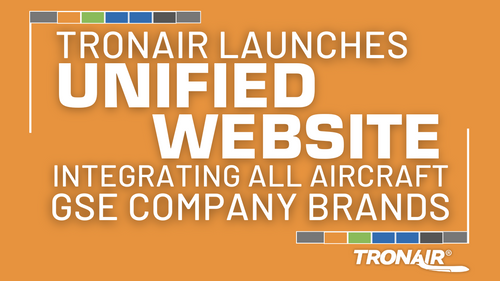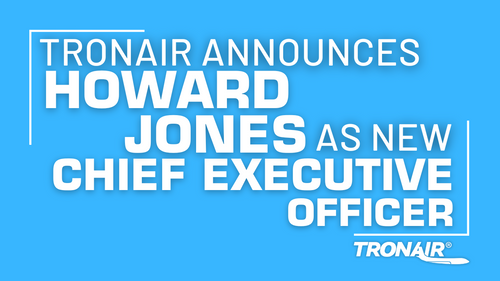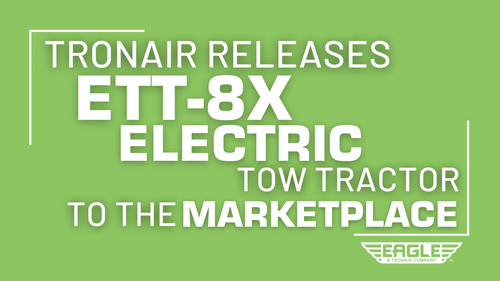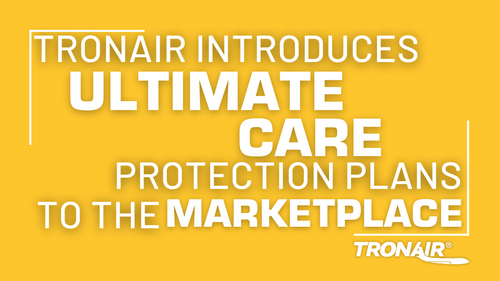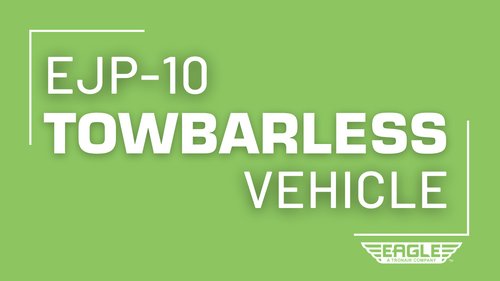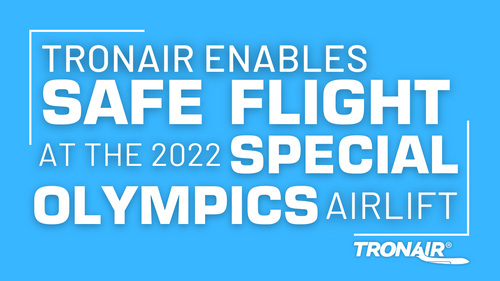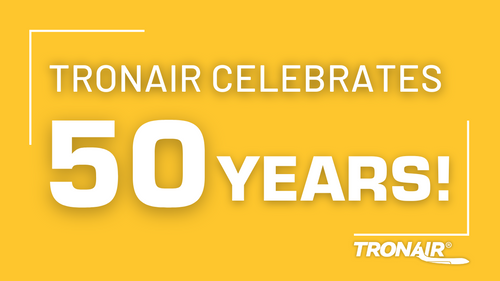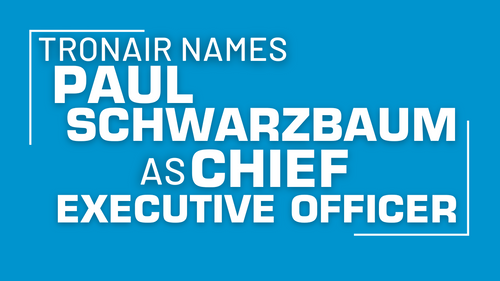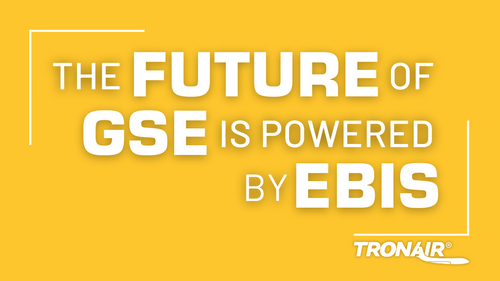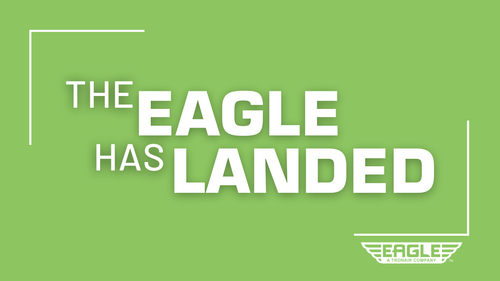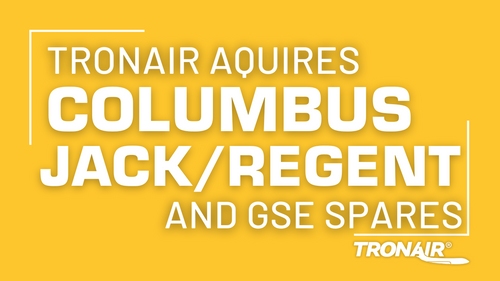
Guide to FAA VALE Grants – How to Get Funding for a New Electric Tug From Tronair
Resources & Technical Articles
The Federal Aviation Administration's (FAA's) Voluntary Airport Low Emissions (VALE) Program is an initiative to create a more sustainable and cleaner aviation industry. The aviation industry is responsible for nearly 2.5 percent of global greenhouse gases. There's never been a more perfect time for airport sponsors to incorporate low emissions projects into their daily operations at minimal cost with FAA VALE grants.
At Tronair, we're making a concerted effort to inform our customers about the money they can save through the VALE program. Our team will help guide you through the process, confirming whether or not you're eligible to apply for a VALE grant. Keep reading to learn more about the FAA VALE grants and how you can obtain financial assistance when purchasing a new electric tug for your airport.
What Is a VALE Grant?
The VALE program is a national effort to reduce all sources of airport ground emissions. The United States government created the program in 2004 to help airport sponsors meet state-related air quality responsibilities and health-based National Ambient Air Quality Standards under the Clean Air Act.
With funding through the Airport Improvement Program (AIP) and Passenger Facility Charge Program, FAA VALE grants allow airport sponsors to take proactive steps to make air quality improvements at their respective facilities. Projects can range from purchasing vehicles with low emissions (electric tugs, preconditioned air and ground power converter units, etc.) to significant infrastructure improvements.
The VALE airport improvement program can also generate Airport Emission Reduction Credits (AERCs) organized by the Environmental Protection Agency (EPA) and State Air Quality Agencies. Airport sponsors can then use AERCs to meet future air emission regulation requirements. As of September 2021, VALE grants have funded over 130 projects at 59 airports. With help from VALE grants, ozone emissions are expected to decrease by nearly 1,703 tons per year for the next five years – equivalent to removing 95,072 vehicles off the road each year.
Who Is Eligible for the VALE Program?
FAA VALE grants are available to commercial service airports located in compromised air quality areas of the country, as designated by the EPA. Any eligible airport must be a "non-attainment" or "maintenance" area for National Ambient Air Quality Standards (NAAQS). Airport sponsors are encouraged to contact their State Air Quality Agency and local EPA for further information or verification according to the latest NAAQS designations. In addition, the proposed project must not be included in any State Improvement Plan in order to be eligible for AERCs. Eligibility to receive credits for a project is a strict requirement of the VALE program.
Nearly one-third of U.S. commercial service airports, including many of the nation's largest, are located in EPA-designated nonattainment or maintenance areas. In addition, changes to the NAAQS have increased the number of airports. Consequently, more sponsors must perform detailed conformity evaluations and plan for the possibility of reduction measures geared toward low emissions.
Ground support fleets, especially aircraft tugs, are located in a centralized position and operate exclusively on airport property. In addition, vehicle refueling and recharging stations can often be safely situated at airports for convenience. This makes them the perfect projects to manage ozone emissions.
How to Apply for FAA Vale Grants
Airport sponsors looking to start the FAA grant process must conform to the guidelines set forth in the VALE Technical Report. The following are the key steps in the application timeline of applying for a VALE program project.
Step 1: Early Coordination & Pre-Application
After consulting with the FAA, airport sponsors can submit a pre-application describing the project proposal, low emissions benefits and the funding request. The FAA will determine the project's scope, discuss application requirements and review the project eligibility.
Step 2: Notification to Proceed
After the review, the FAA will tell the airport sponsor whether they have been selected to proceed to the final application. After the notification to proceed goes through, the sponsor should get the Air Quality Agency Concurrence and go out for bids.
Step 3: Air Quality Agency Concurrence & Bidding
Sponsors should then submit the approved draft to the local air quality agency to request an AERC letter of assurance. The agency will review the proposal's emission reduction calculation method and ensure that any credits generated are not already counted under the State Implementation Plan or any other approval process.
Step 4: Full VALE Program Application
The airport then must submit a complete VALE program application to the FAA Airports Division and District Office (ADO). The FAA must agree with the scope of the project and the emissions reduction estimate and methodology.
Step 5: Project Approval
The FAA will then review the final VALE program application for ozone emission reduction, cost and other requirements. Projects selected after the final review will receive FAA VALE grants, which will require the sponsor to track ozone emission reduction.
Let Tronair Help You Get Funding for an Electric Tug With FAA VALE Grants Today
The VALE program is an exciting venture for any airport looking for low emission ground support equipment. At Tronair, we're happy to help you apply for FAA Vale grants so you can purchase electric tugs and make a real difference. Not only will you be contributing to a healthier environment, but you'll also have a brand new electric tug designed to improve daily operations. Browse our entire selection of electric aircraft tugs today. When you find the one you want, fill out our Tronair VALE Application to see if you qualify for financial assistance.
If you have questions about the FAA grant process, contact us anytime to speak to an expert. We're always here to help.
Shop Aircraft Tugs Today
